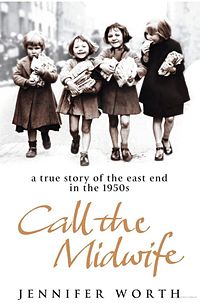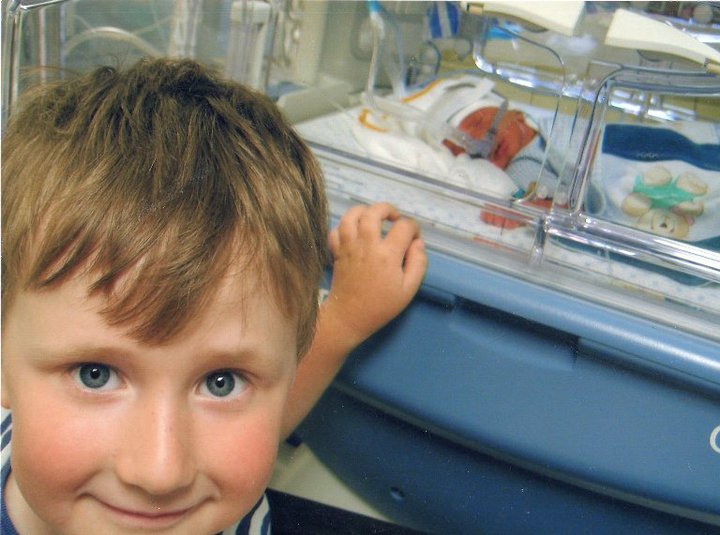Call the Midwife Traditional Geocache
Maitomies: Laitetaanpa tämä kätilö eläkkeelle.
Och samma på svenska ...
-
Difficulty:
-

-
Terrain:
-

Size:  (small)
(small)
Please note Use of geocaching.com services is subject to the terms and conditions
in our disclaimer.
Traditional cache near Central Hospital of Tavastia, Hämeenlinna, where all of my three children has been born, with the help of amazing professionals.
This cache is hidden to celebrate my wife's graduation at 28.3.2013 to become a midwife, which has been her dream since childhood. congratulations, my love.
Call the Midwife is a memoir by Jennifer Worth, and the first in a trilogy of books describing her work as a district nurse and midwife in the East End of London during the 1950s. Worth wrote the book after retiring from a subsequent career as a musician, and it was originally published in 2002. Reissued in 2007, it became a bestseller, as did the sequel Shadows of the Workhouse (2005, reissued 2008) and the final volume Farewell to the East End (2009). By the time of Jennifer Worth’s death in June 2011, her books had already sold almost a million copies. In 2012, the popular BBC adaption of the trilogy boosted sales further, and all four of the author's books about the East End (the "Midwife trilogy" and In the Midst of Life (2010) went back into the charts.

Midwifery is a health care profession in which providers offer care to childbearing women during pregnancy, labour and birth, and during the postpartum period. They also help care for the newborn and assist the mother with breastfeeding. A practitioner of midwifery is known as a midwife, a term used in reference to both women and men, although the majority of midwives are female. In addition to providing care to women during pregnancy and birth, many midwives also provide primary care to women, well-woman care related to reproductive health, annual gynecological exams, family planning, and menopausal care.
In the term midwife, the morpheme -wife is pronounced as expected (pron.: /waɪf/), but midwifery is normally pronounced /mɪdˈwɪfᵊri/ (mid-WIF-(ə)ree).

Midwives are specialists in low-risk pregnancy, childbirth, and postpartum, although they are trained to recognize and deal with deviations from the norm as well as certain high risk situations. Obstetricians, in contrast, are specialists in illness related to childbearing and in surgery. The two professions can be complementary, but may be at odds in some countries, where obstetricians are taught to "actively manage" labor, while midwives are taught not to intervene unless necessary. Most midwives are familiar with the process of physiological management and the use of gravity in aiding the process of labor.
Midwives refer women to general practitioners or obstetricians when a pregnant woman requires care beyond the midwives' area of expertise. In many parts of the world, these professions work together to provide care to childbearing women. In others, only the midwife is available to provide care. Midwives are trained to handle certain more difficult deliveries, including breech births, twin births and births where the baby is in a posterior position, using non-invasive techniques.
For low risk births, compared with obstetricians, midwives offer lower maternity care cost, lower intervention rates, reduced mortality and morbidity as a result of fewer interventions, and fewer recovery complications.

Majority of the healthcare in Finland is offered by public service providers. The private sector is very small. Primary health care is offered in municipal health centers, whose services include physical examinations, oral health, medical care, ambulance services, maternity and child health clinics, school and student health care and other basic services. Specialized medical care, including outpatient and institutional treatment is provided by hospital districts. Diseases requiring highly demanding treatment are handled by regional arrangements or centrally according to a specific decree.
Maternity clinics provide family support, with attention to relationships and parenting. Special emphasis is placed on the role of fathers and parental responsibility. Expectant mothers normally meet with a nurse and doctor 11-15 times during pregnancy. Attending a maternity clinic is one of the preconditions for eligibility for maternity benefit.
In addition, parents take part in family and childbirth preparation sessions. Visits monitor the progress of the pregnancy and arrange for mothers to receive follow-up treatment in the event of problems. Mothers are offered screening for foetal chromosome and growth defects during pregnancy.
A 'labour ward, also called a delivery ward or labour and delivery, is generally a department of a hospital that focuses on providing health care to women and their children during childbirth. It is generally closely linked to the hospital's neonatal intensive care unit and/or obstetric surgery unit if present. A maternity ward or maternity unit may include facilities both for childbirth and for postpartum rest and observation of mothers in normal as well as complicated cases.
- Maitomies -

Additional Hints
(Decrypt)
[fin] Unafxn xhhfra "anhynffn"
[eng] Tybir ng "gur anvy" bs fcehpr